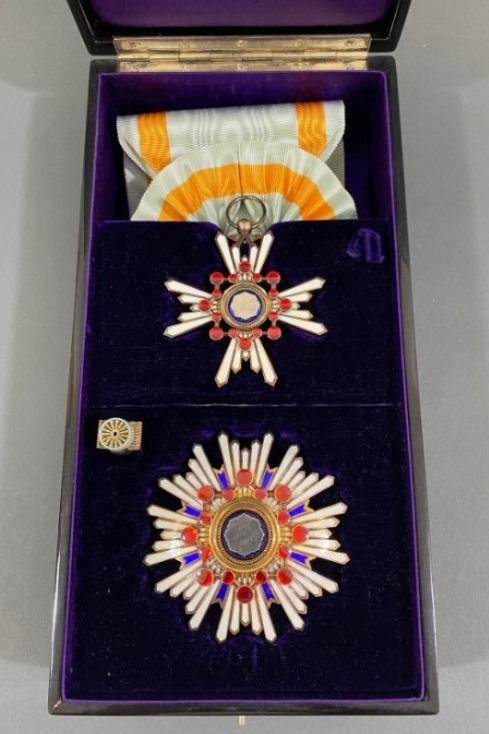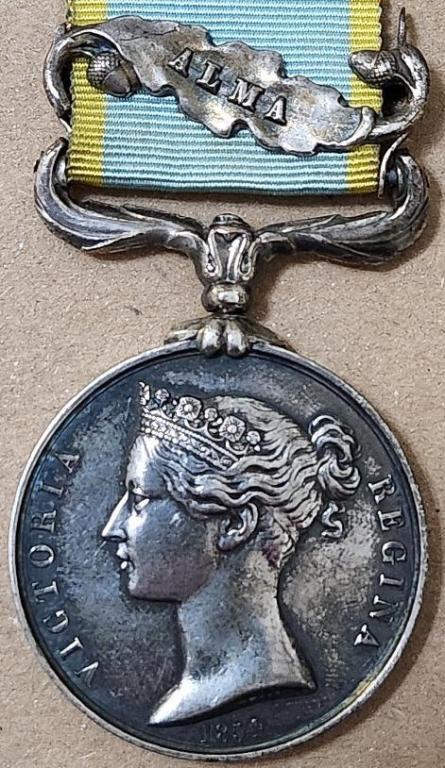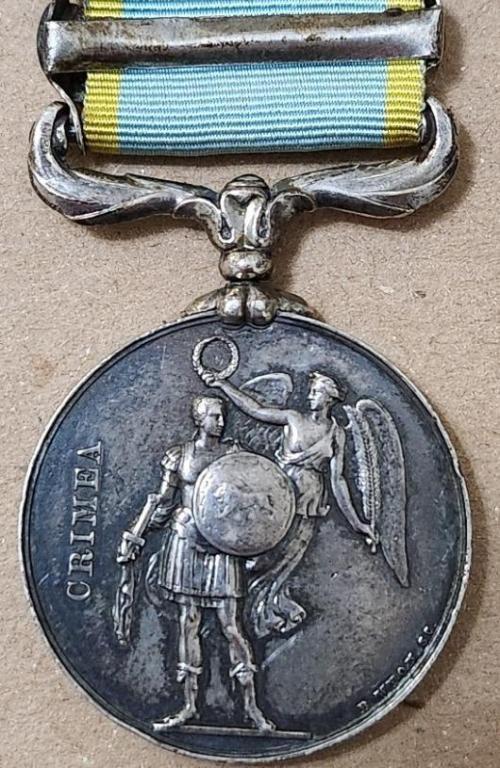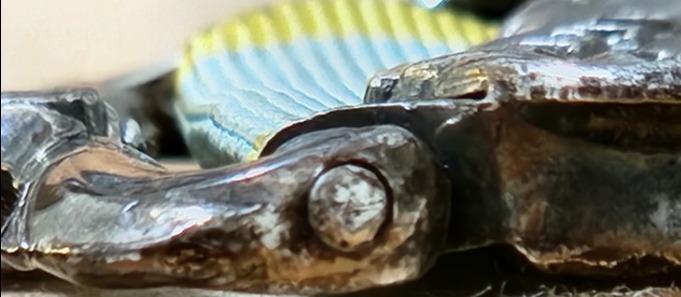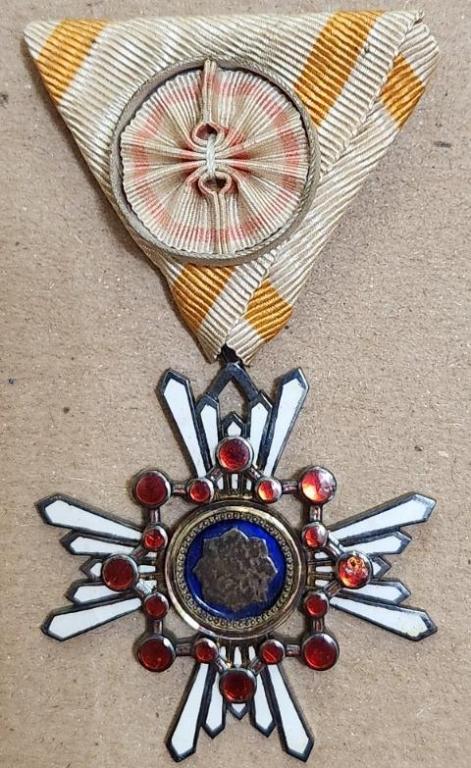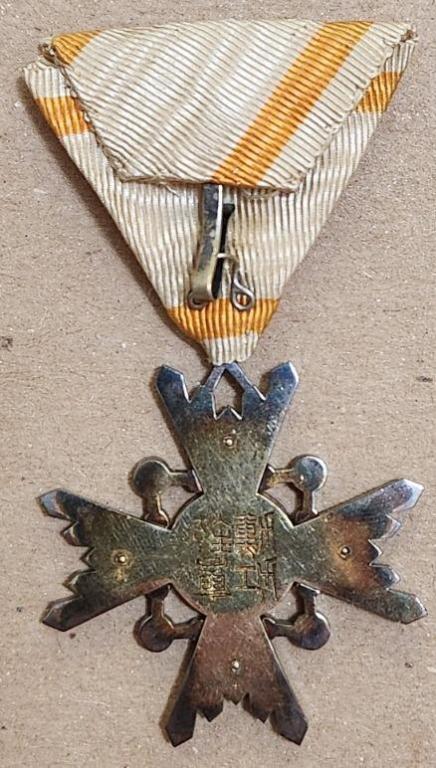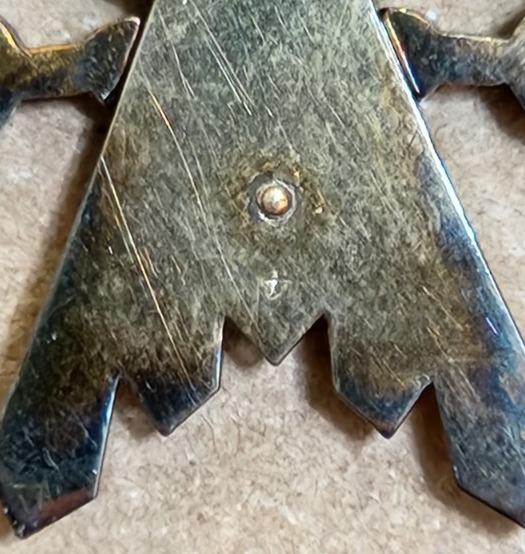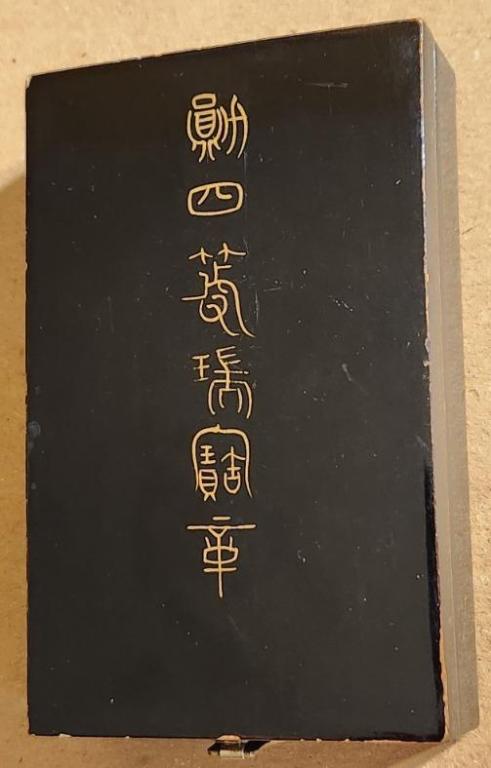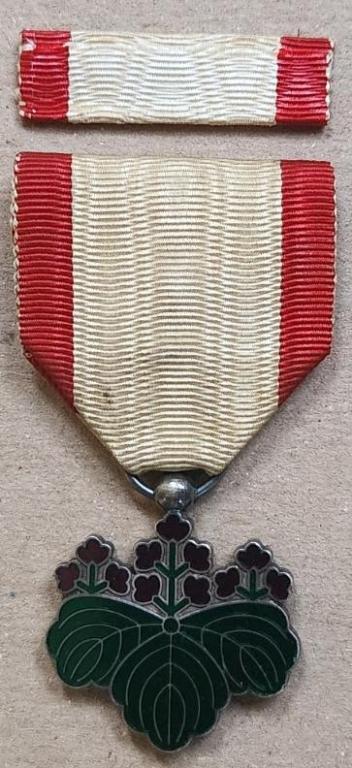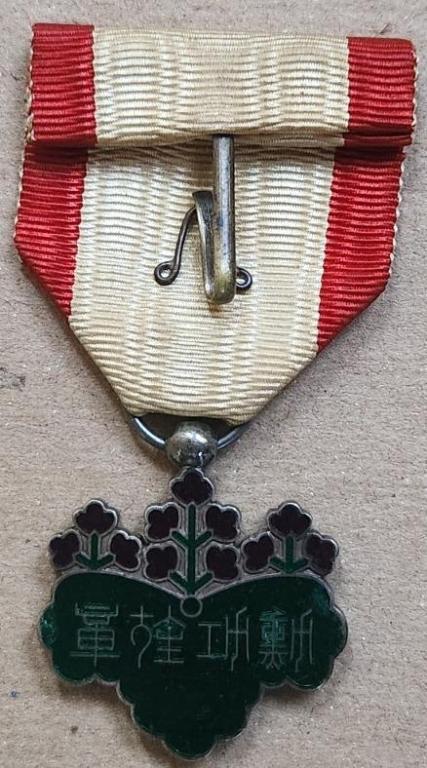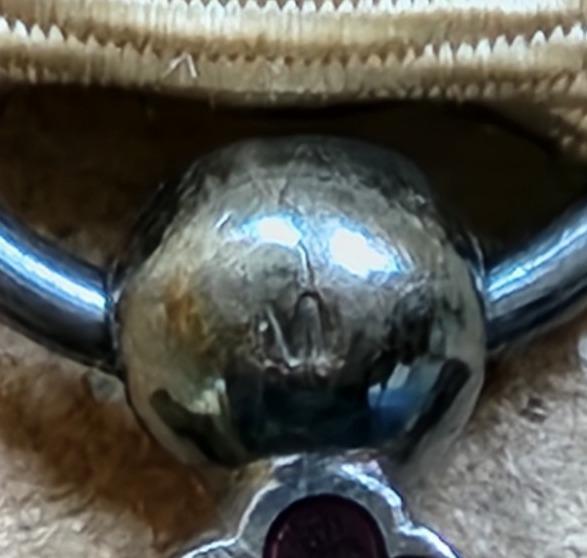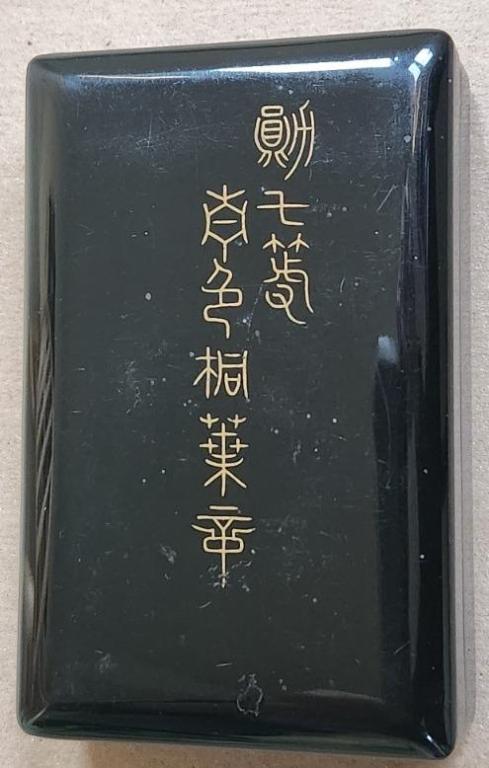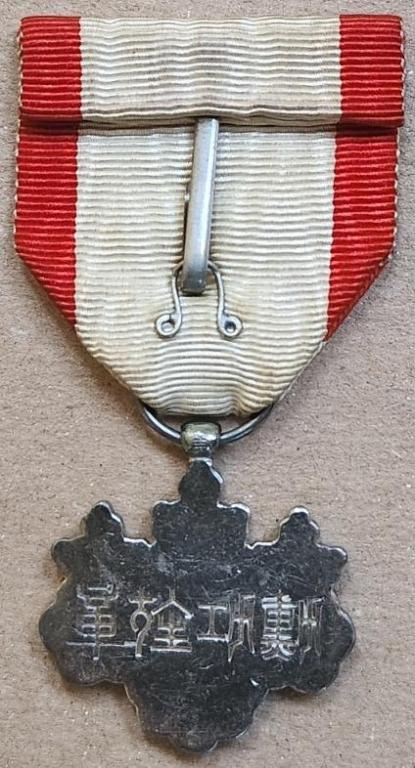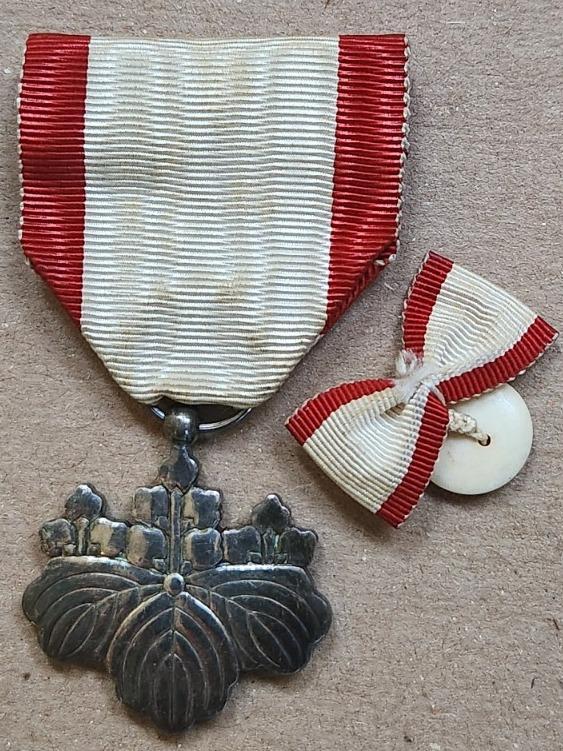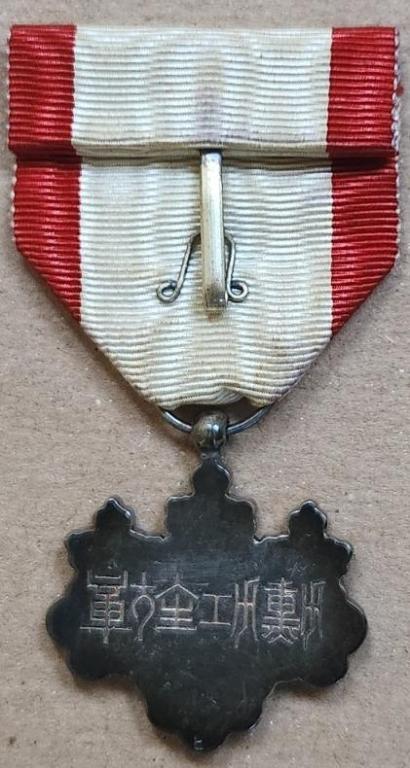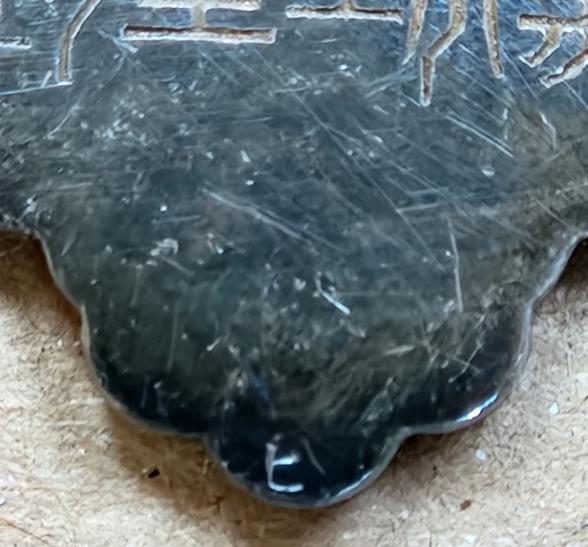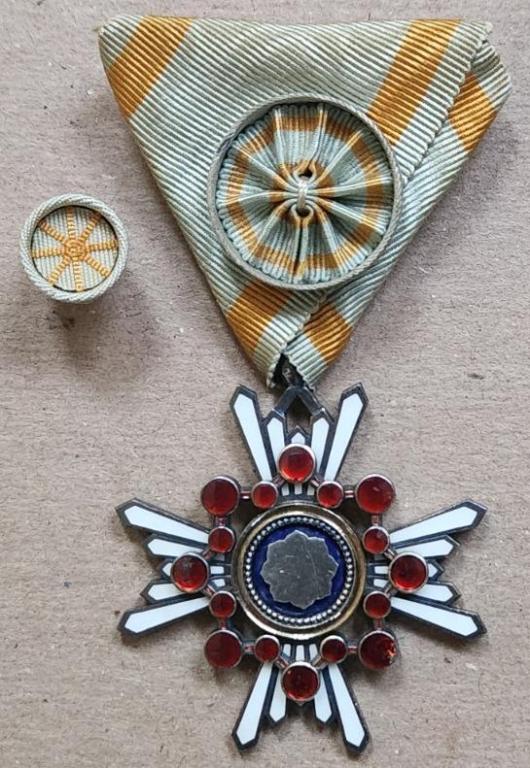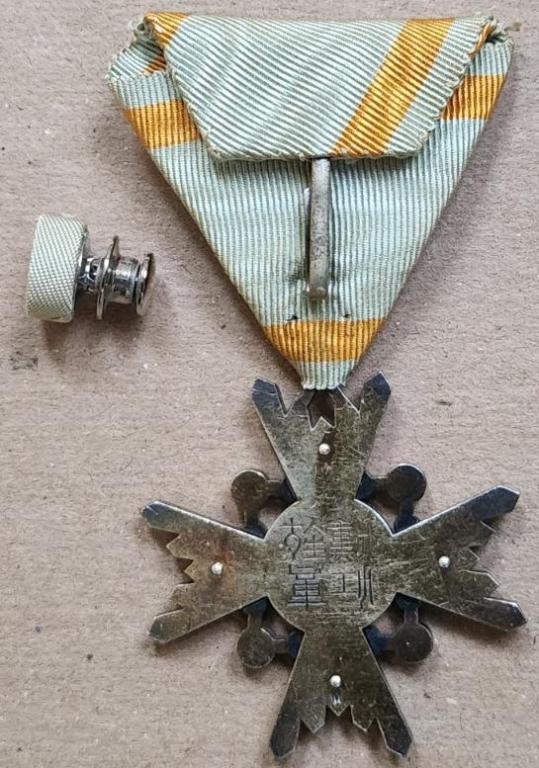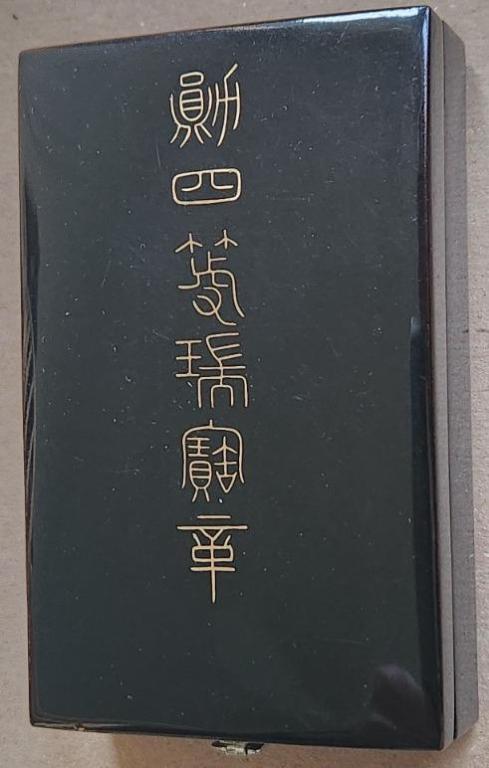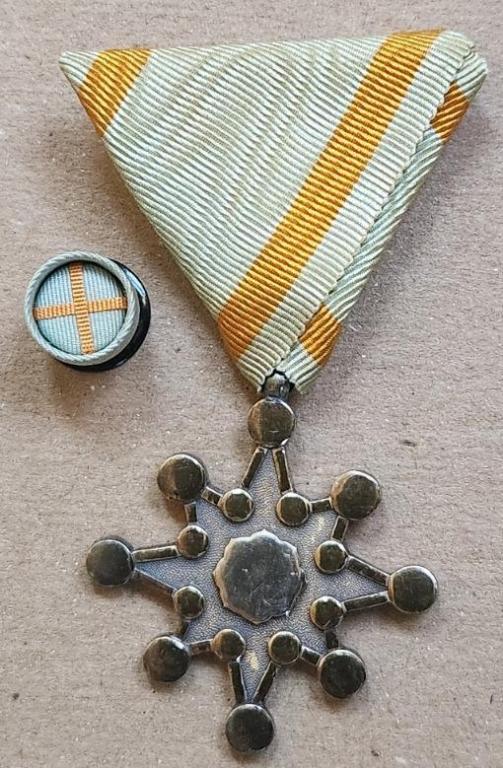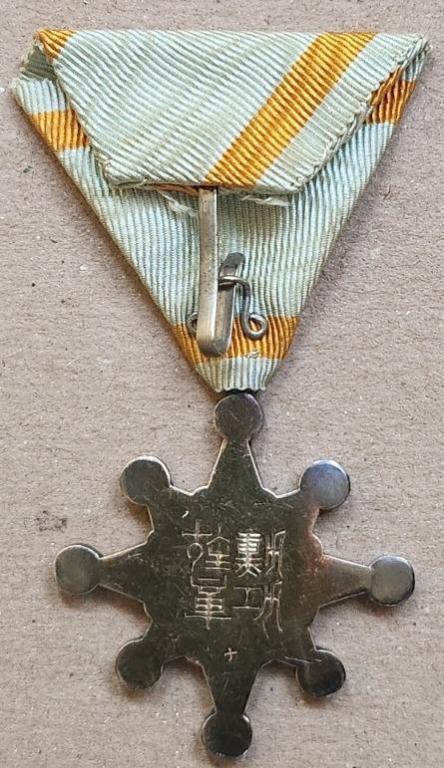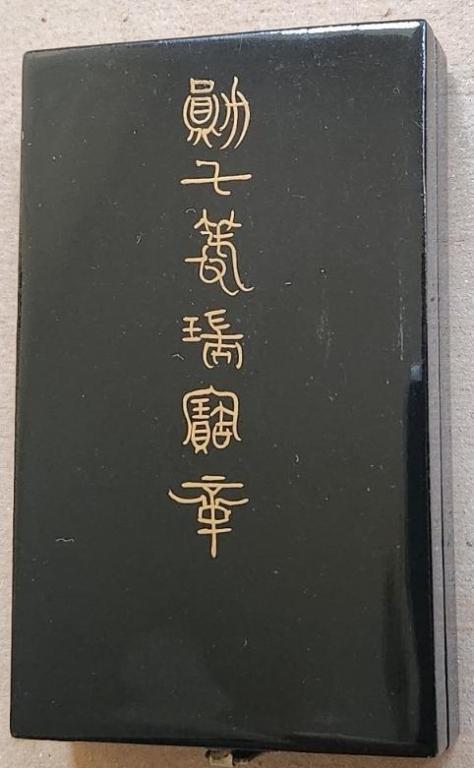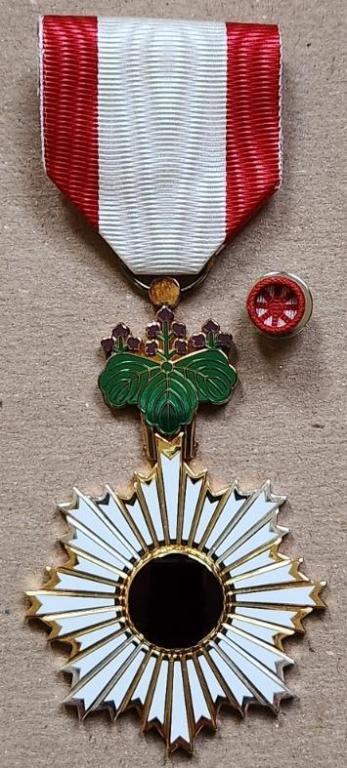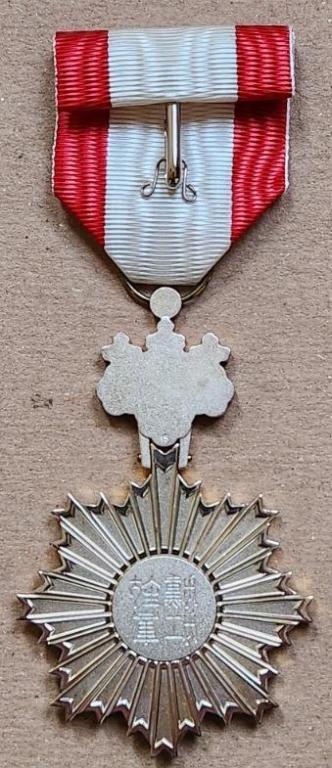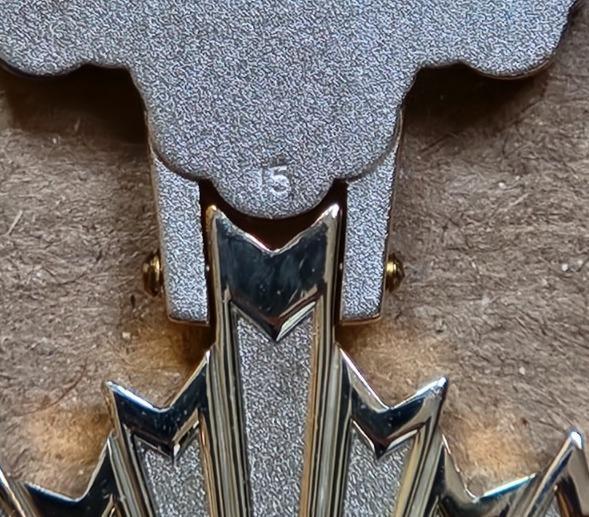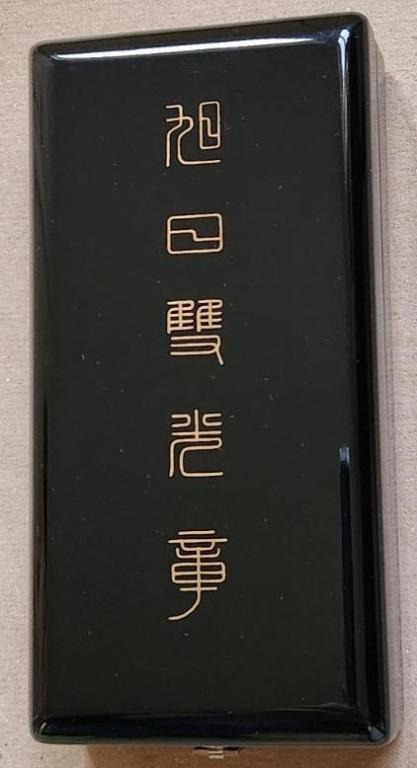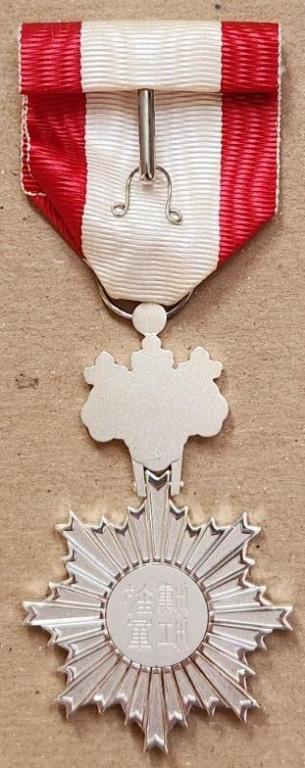-
Posts
468 -
Joined
-
Last visited
-
Days Won
20
Content Type
Profiles
Forums
Blogs
Gallery
Events
Store
Everything posted by TracA
-
(1).thumb.jpg.38cff8cd9c5d55311a4208b0a83448ba.jpg)
Bulgarian Commemorative Medal 1915-1918
TracA replied to gjw's topic in Southern European & Balkan States
Nice medal. Sorry Greg, I do not. Good hunting! Tracy -
(1).thumb.jpg.38cff8cd9c5d55311a4208b0a83448ba.jpg)
My First Crimea Medal
TracA replied to TracA's topic in Great Britain: Orders, Gallantry, Campaign Medals
Greetings Alex K, Thank you for the compliment. Indeed, I would know less if it weren't for the seasoned researchers, and their generosity to assist and give me pointers. Part of what drove me down this side-quest of British campaign medals is, as you say, the naming which in turn allows us to resurrect the soldier's history. Thanks for the compliment on the meal. It really has a gorgeous toning to it that is not done justice by my cell phone camera. I also love the fact that these medals are solid, rather large in diameter, hefty to the feel, and have wonderful detailing. All the best, Tracy -
Very interesting set of documents. Thanks for posting them. Tracy
-
Greetings, Over the past several months I have developed a bit of a medal collecting side-quest: British Campaign Medals. Below is the first one that I have actually done a bit of research on. My Crimea medal is a single clasp, Alma, to Private P. O’Brien, 4th Regiment. I was provided with the applicable medal roll by the seller, so I quickly found the digitized copy at TNA and poked around. Per the wonderful book ‘By Order of Her Majesty’ The Crimea Medal I can say that my example is the smaller large date without full stop obverse, and that it has a pattern 1 Alma clasp. After carefully comparing the impression on Private P. O’Brien’s medal with pages 156 to the top of 158 in ‘By Order of Her Majesty’ I conclude that the medal is officially impressed. What can I say about the recipient? After studying WO 100/26, p. 161, and doing some perusing of that page and others, I am pretty sure that his first name is Patrick. I can also say that he was entitled to the Inkerman clasp, although it is not on his medal. A very helpful member of the British Medals Forum, and one of the authors of ‘By Order of Her Majesty’, informed me that by default Private Patrick O’Brien would also be entitled to the Sebastopol clasp, as apparently it was an automatic qualification by virtue of being at Inkermann. So, what I thought was a two clasper, with only one on the medal itself, turned into a three clasper. The medal recipient’s regiment number? Digitization of the medal roll’s gutter unfortunately cut it off. I originally thought that it was ?634 but revised that. See below. After taking advantage of the free for Remembrance Day weekend at FindMyPast, and flailing around that website, I was able to find a transcript reference to the WO 12 series (WO 12/2232 to be exact) for a Private Patrick O’Brien, 4th (The King’s Own) Regiment of Foot, Service Number 2534 (I believe the field should technically be labeled “regiment number” on the transcript), year 1851. That portion of the WO 12 series is not digitized, so I reached a roadblock. However, looking back at WO 100/26 I could now see the second digit of the regiment number as a 5 instead of a 6, so I settled on a regiment number of 2534. Looking back at the medal roll in combination with what I learned from ‘By Order of Her Majesty’ also told me something else about Private Patrick O’Brien: the ‘W.O.’ at the far right of his entry line indicates that he did not survive to receive his medal. Rather, a next of kin must have applied for the medal and the War Office then forwarded it on the date next to the ‘W.O.’, a date that I cannot fully read. I believe the month is April and the year is 1857, but I cannot decipher the date. The same helpful BMF member referenced above informed me that his research unearthed that the date of War Office issue to the next of kin was the 6th of April 1857, so that cleared-up the date issue for me. Given the above I thought that I might find Private Patrick O’Brien, 4th (The King’s Own) Regiment of Foot, listed in the London Gazette as a casualty. I searched for ‘P O’brien’ from the 20th of September 1854 to the 31st of December 1858. Alas, I found nothing. Then it dawned on me that the Gazette more than likely would only list casualties as a result of the fighting, and not as a result of disease or harsh winter conditions. He must have survived long enough, however, to qualify for the Inkerman clasp. Once again the wonderful BMF member referenced above came to the rescue and pointed me to the Old Mersey Times website and told me where to look so that I could unearth the sad ending of Private Patrick O’Brien. He died of fever at Scutari Hospital, Istanbul, Turkey sometime between December 31st, 1854 and January 3rd, 1855. Below are some detailed pictures of the single clasp Crimea medal to Private Patrick O’Brien, who actually qualified for three clasps but sadly did not survive to receive his medal. Fortunately a next of kin cared enough to apply for the medal and then received it, officially impressed, from the War Office. I am now honored to hold Private Patrick O’Brien’s, 4th (The King’s Own) Regiment of Foot, Crimea Medal, and thereby keep alive some memory of the man. The toning on the medal is, to my eye, quite beautiful. All the best, Tracy A snip of WO 100/26 p. 161 for the two O’Briens in the regiment. Obverse: Clasp close-up: Reverse: Naming. Officially impressed, I believe. It took me quite a while to figure out how best to use my cell phone to capture the naming. The first ‘E’ came out looking very odd because it is actually not a full strike on the medal rim: Suspension bar rivet, right side of the obverse. A good rivet head: Suspension bar rivet, left side of the obverse. Looks pretty iffy, and I was informed by an expert that this is a sure sign of the medal having been tampered with by the removal of the clasp carriage and adding of the single Alma clasp. The implication to me is that the War Office would have sent the medal without any clasps.
-
Greetings, I was lucky enough to acquire this wonderful Order of the Sacred Treasure, 4th Class, with the ナ (na) hallmark in the middle of the lower third of the reverse. For a little more information, see my post above about the Order of the Sacred Treasure 7th Class with the same mark. I note that this is an example where the stripes on the rosette are a different color than the stripes on the ribbon, pink on the former and yellow on the latter. Thanks for looking. Tracy Obverse. Note the different colored stripes: Reverse: ナ (na) hallmark up close. It was a bit difficult to photograph. Case lid, with a single row of gold kanji and the “Meiji/Taisho” stylization of 勛 (kun).
-
Hello Kshea, Welcome. I gave a quick glance over my copy of The Waterloo Medal Roll, published by The Naval and Military Press, as sometimes a fresh set of eyes can do wonders. I also did not find a Maurice Shea. In fact, the only Shea listed for the 73rd Regiment of Foot is Wm. Shea, Captain Kennedy's Co. Have you posted your question on the British Medals Forum? If not, then I suggest you do so. You have to create an account, but it is free. Good luck with your quest, All the best, Tracy
- 1 reply
-
1
-
Greg, Nice indeed. Congratulations. Tracy
-
(1).thumb.jpg.38cff8cd9c5d55311a4208b0a83448ba.jpg)
North Staffordshire dress uniform
TracA replied to USN's topic in Great Britain: Militaria: Badges, Uniforms & Equipment
Hello USN, I am just seeing this thread. Have you tried posting this question on the British Medals Forum? You will have to register to use the site, but registration is free. Tracy -
No One, What a wonderful collection of family history. It is awesome to have those items in your possession. All the best, Tracy
-
No One, I assume that is Arabic on the medal. Do you know what it says? Are all of these Tirailleur badges yours? If they are, then you have an amazing collection. All the best, Tracy
-
Thank you, No One. My collection is also growing slightly out of control, or maybe just out of control. 😄 I am running out of space to display my collection, and if I really start picking-up my collecting of Queen's South Africa, King's South Africa, and Crimea medals, then I am really in for it. All the best, Tracy
-
My fifth and final entry for now. I thought that I had recently acquired six marked items but alas, photos can be deceiving. What I thought was an M mintmark on the reverse ball of an Order of the Rising Sun 8th Class turned out to simply be a trick of the light in the seller’s photograph. Below is a beautiful Order of the Rising Sun 7th Class with double enameling. Although it did not come with a lapel rosette or bow, it did come with the ribbon for a medal bar. On the reverse of the ball is the M mintmark of the Japan Mint, Osaka. Known time coordinates are March 1930 to April 6, 1943. The case lid has a double row of stylized gold kanji with the “Meiji/Taisho” stylization of 勛 (kun). Unfortunately it is missing the clasp that attaches to the top half of the lid. Enjoy. Tracy Obverse: Reverse: Close-up of the M on the reverse of the ball: Case lid:
-
Next up is another Order of the Rising Sun 8th Class. This one, however, has the 美 (bi) hallmark on the reverse of the ball. This is the mark of the Shobidō workshop and per Medals of Asia the known time coordinates are 1900 to 1929. Once again the case lid has a double row of gold kanji with the “Meiji/Taisho” stylization of 勛 (kun). Unfortunately this one did not come with a lapel rosette or bow. Tracy Obverse: Reverse. Note that the 美 (bi) hallmark on the reverse of the ball can be seen. Close-up: Case lid:
-
The third piece that I recently acquired is a wonderful Order of the Rising Sun 8th Class with the ヒ (hi) hallmark at the 6h. Known time coordinates for this mark, per Medals of Asia, is 1915 to 1929. The maker remains unknown. It came with a nice older bow style lapel “rosette” and the case lid has a double row of very stylized gold kanji with the “Meiji/Taisho” stylization of 勛 (kun). I note that the kanji on this case lid are drawn in particularly thick lines. All the best, Tracy Obverse: Reverse: Close-up of the ヒ (hi) hallmark at the 6h: Case lid. Note the particularly thick lines.
-
Next up is a lovely Order of the Sacred Treasure 4th Class with four rivet reverse. Under the 6h rivet is an M, the mark of the Japan mint at Osaka. As of today the known time coordinates for this mark is March 1930 to April 6, 1943. The case has a single row of gold kanji on the lid with the “Meiji/Taisho” stylization of 勛 (kun). I note that although the color of the button rosette closely matches the color of the ribbon, the backing of the rosette is silver metal. Both the silver color of the metal and design, but not the color of the rosette itself, match those button rosettes of post 2003 Reform orders. As such I think this button rosette was simply “put together” with this order whose hallmark dates it to the 1930s and early 1940s. Tracy Obverse with button rosette face on. Reverse. Note the silver color and design of the button rosette. Close-up of the M under the 6h rivet: Case lid:
-
Greetings, Recently I have had a nice haul of marked orders and decorations. I am still amazed at what you can find if you do a little hunting and pay attention to photographs, and I am equally amazed at some of the prices. I guess that is partially a testament to the lack of competition for the purchase of these items. I am certainly not complaining. All of my attributions and dating comes from JapanX’s Medals of Asia. See https://asiamedals.info/threads/makers-marks-of-japanese-orders-and-medals.14996/. I cannot stress enough my reliance on JapanX’s expertise and amass of information. All the best, Tracy First up is a lovely cased Order of the Sacred Treasure 7th Class with a ナ (na) hallmark in the middle of the lower third of the reverse. Whomever used this hallmark was active in the first quarter of the 20th Century. It is possible that this is the mark of Namikawa Yasuyuki’s workshop. For more information on him see Medals of Asia at https://asiamedals.info/threads/mark-na-on-japanese-orders-and-medals-who-and-when.28707/. The button rosette bears the ス (su) mark. I note that the color of the rosette is quite different from the color of the ribbon, so I am thinking that they are a “throw together”. The case lid has a single row of gold kanji and the “Meiji/Taisho” stylization of 勛 (kun). Obverse with button rosette: Reverse. Note the very prominent ナ (na) hallmark in the middle of the lower third of the reverse. Case lid:
-
Thank you, JewittDan. Much appreciated. Tracy
-
No One, Thank you again. Great graphic that I will certainly download and add to my documentation files. All the best, Tracy
-
No One, Thank you very much for the clarification. I will add this to my documentation. All the best, Tracy
-
No One, That is a nice looking insignia. Tracy
-
Next up for me is the only other Post 2003 Reform Order of the Rising Sun currently in my possession: a Gold and Silver Rays, formerly the 5th Class. Just like its pre-2003 counterpart and the post-2003 Silver Rays, the Gold and Silver Rays has a ribbon that is approximately 35 mm wide with a 20 mm white stripe between two 8 mm red striped edges. Compared to the former 5th Class, the Gold and Silver Rays generally has the same obverse design: enamel coloring; all metal, including leaf veins, in gilt with the exception of the three longest rays between the 12h, 3h, 6h, and 9h, which are in silver. One exception is the piece attaching the badge to the ribbon ring. That piece is no longer a ball or knob, it is a disc the diameter of which is larger than its thickness. The dimensions between the Gold and Silver Rays and the former 5th Class are also the same with the exception of the thickness. Both are approximately 45 mm wide by 67 mm long (from the longest point of 6h ray to the top of the 12h paulownia flower) but the Gold and Silver Rays is approximately 2 mm thick while the former 5th Class is approximately 1 mm thick. As with the Silver Rays, a feature that the Gold and Silver Rays shares with, and retains from, late Showa/early Heisei pre-2003 reform orders is a higher “standing” red cabochon “sun”. See the Medals of Asia link above in my first post. As with the Silver Rays, the Gold and Silver Rays’ reverse is different from the former 5th Class. No longer is the reverse an enameled mirror of the obverse, with the “Order of Merit” seal characters on the reverse of the paulownia leaves. Instead, the reverse is pebbled silver with no enameling and no red sun cabochon. The “rays out from the center” design, however, is retained in a raised outline. The reverse of the paulownia leaves and flowers are flat and featureless. Thus, the seal characters are now located where the red sun cabochon was located on the pre-2003 orders. Given the different dimensions between the Gold and Silver Rays and the Silver Rays, the fact that neither of the items in my possession are tarnished, and the fact that the Silver Rays has the shorter short rays design, the contrast between the two side-by-side is obvious. All the best, Tracy Obverse: Reverse: Close-up of the I5 hallmark at the 6h. I note that as of October 12, 2024 Medals of Asia has a single dated reference to this hallmark: a Post 2003 Reform Order of the Sacred Treasure with award certificate, dated March 11, 2013. Case lid, with nicely stylized kanji. As No One mentioned above, no more ranked class designation:
-
Thank you, No One, for contributing the additional important information and very illustrative pictures. Indeed, in his OMSA article Nyle Monday briefly refers to some of these points. There is an article about the call for reform in the English language Japan Times, dating from January 11, 2000. Unfortunately it is behind a paywall of at least $30 for an unlimited, monthly subscription. I have to admit that I have been unwilling to pony up the $30 for the ability to read this single article. All the best, Tracy
-
Greetings, I thought that it would be time to start a general thread about the Post 2003 Order of the Rising Suns, a “companion” to my thread here on GMIC about Post 2003 Order of the Sacred Treasures (see https://gmic.co.uk/topic/81482-the-post-2003-reform-order-of-the-sacred-treasure/#comment-723971). For some generalized information see the above referenced thread. Note that when he authored his article for OMSA, Nyle Monday did not have access to actual examples of the orders about which he was writing; he was referencing pictures found at the time on the relevant pages of the Japanese Cabinet Office’s website, and those pictures were only of the obverses. Therefore, at the time he was unaware that the reverse of the revised Orders of the Rising Sun were quite different from their pre-2003 predecessors. For now I only possess the lowest two post-2003 Rising Suns. I must admit that I do not find these on the market very often, but I am always on the lookout. I hope that you enjoy this for now relatively brief thread. All the best, Tracy The Order of the Rising Sun Silver Rays is the post-2003 reform version of the former 6th Class. The ribbon is approximately 35 mm wide with a 20 mm white stripe between two 8 mm red striped edges. The dimensions and configuration of the ribbon are the same as the former 6th Class. The obverse design of the Silver Rays is generally the same as the former 6th Class (color of enameling; all metal, including leaf veins, in silver) with the exception of the piece attaching the badge to the ribbon ring. That piece is no longer a ball or knob. Rather, it is a disc that has a larger diameter than its thickness. The order itself measures approximately 39 mm wide by 59 mm long (from the longest point of the 6h ray to the top of the 12h paulownia flower) by 2 mm thick. A feature that the Silver Rays shares with, and retains from, late Showa/early Heisei pre-2003 reform orders is a higher “standing” red cabochon “sun”. See Medals of Asia at https://asiamedals.info/threads/6th-class-rising-sun-order-awarded-in-1995.27419/. The reverse of the Silver Rays is quite different from the former 6th Class. It is no longer an enameled mirror of the obverse, with the “Order of Merit” seal characters on the reverse of the paulownia leaves. Rather, the reverse is pebbled silver with no enameling and no red sun cabochon, but the “rays out from the center” design is retained. The reverse of the paulownia leaves and flowers are now simply flat and featureless. The seal characters are no longer on the reverse of the paulownia leaves, they are now located where the red sun cabochon was located on the pre-2003 orders. Finally, I would like to note another major difference as well as a similarity between the Silver Rays and its former 6th Class counterpart. The former 5th and 6th Classes shared the same exact dimensions, the only distinguishing feature was gilt metal on the former and silver metal on the later. Over time tarnishing would eradicate the gilt vs. silver difference, making it next to impossible to distinguish the 5th Class from the 6th Class simply by looking at the obverse. So, in about 1938 or 1940 there was a design change to the 6th Class: the short rays were shortened even more, thereby resulting in an observable difference in the shapes of the 5th and 6th Classes. A major difference between the Silver Rays and the former 6th Class: the Silver Rays now has smaller dimensions than the Gold and Silver Rays. A similarity between the Silver Rays and the former 6th Class: the Silver Rays retains the “shorter short rays” design of the post-1938 or 1940 former 6th Class. Silver Rays obverse and rosette: Silver Rays reverse, on which there is a ZF hallmark at the 6h. The hallmark is so lightly impressed that I cannot get a picture of it with my cell phone, although it shows up below as a very slight imperfection. Silver Rays case lid. The stylization of the kanji is certainly different from that for the pre-2003 reform orders, but it is no less appealing.
-
No One, Thank you for the picture and information. My assumption is that there are probably a large number of different membership badges. All the best, Tracy
-
Hello Bruce, You are correct that the star represents the Army. The PWA wasn't a recruiting organization, but an aid and support organization. I cannot find more about it in English than at Medals of Asia, here: https://asiamedals.info/threads/history-and-badges-of-greater-japan-womens-patriotic-association.23765/. There is also a brief mention of it in Smethurst's A Social Basis for Prewar Japanese Militarism. I own the book and have read it. For the relevant pages see Medals of Asia at https://asiamedals.info/threads/history-and-badges-of-greater-japan-national-defense-womens-association.24021/#post-351271. All the best, Tracy

